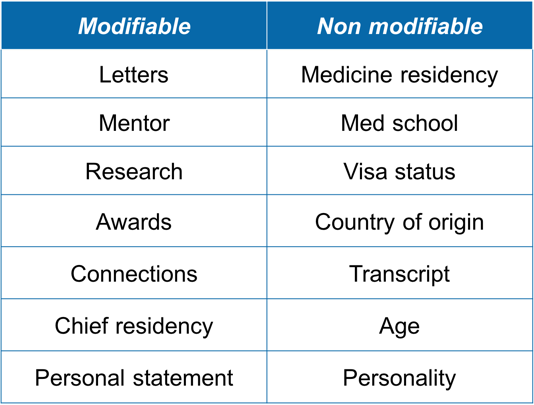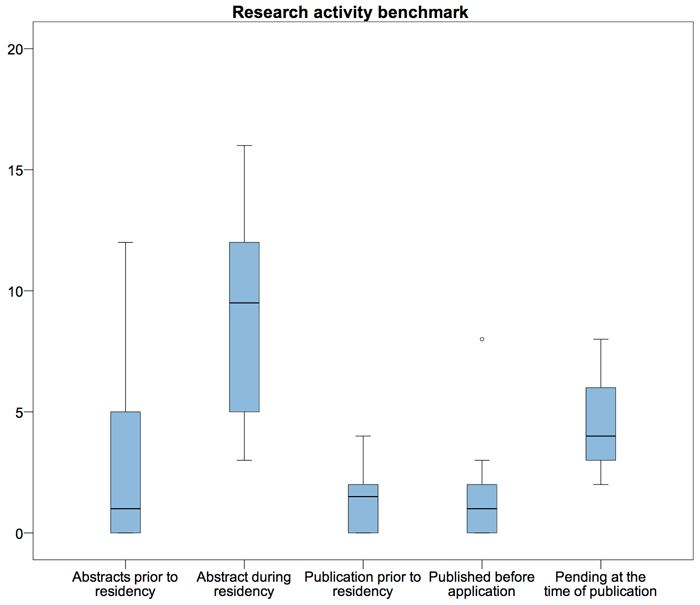Securing Our Future: How Do We Recruit the Best and Brightest?
Cardiology remains one of the most popular medical subspecialties today, and continuing to attract the brightest medical students and internal medicine residents to consider a career in cardiovascular medicine is crucial in advancing the subspecialty. Lack of exposure to the increasing number of cardiology subspecialties during medical training, as well as the long clinical hours and lengthy training requirements for many fields within inpatient cardiology, may discourage medical students and residents to consider a career. Exposing medical students and internal medicine trainees to the advances, limitations, challenges and future promise of cardiovascular medicine should be a major national priority for the ACC and every academic department of cardiovascular medicine. In this article, we outline how Fellows in Training at our institution serve as instruments to achieve this goal.
Mentorship: Creation of Cardiology Interest Group in the Internal Medicine Residency Program
A fellow-guided, resident-driven group was created with the primary focus to promote peer-to-peer mentoring in an inviting and stimulating environment. Some of the activities including career guidance meetings led by fellows, fellow-guided forums on seeking a competitive cardiology fellowship and an annual research meeting to help pair residents and medical students with ongoing research projects. This group was founded by the author – a former internal medicine resident at the same institution – and his co-fellows.
Currently, the group is primarily organized and run by the internal medicine residents. Each year, a representative is chosen among the members to act as a liaison between the residency and fellowship. From the fellow perspective, participation is voluntary. There are multiple opportunities to be involved and often the supply of fellows outweighs the demand from residents. Teaching sessions occur at least once a week and are held in the coronary intensive care unit, as well as quarterly meetings as a group. Fellows are involved throughout their fellowship and it includes both general and subspecialty fellows.
Education: Fellow-Guided Teaching Sessions
Fellows provide problem-based teaching sessions in both a curriculum and on-demand setting. The sessions are well-received mostly because fellows are able to deliver experience-based, practical teaching points in an enthusiastic way. The sessions are also well-received to not only those interested in cardiology but also those that are still undecided.
Coronary care unit teaching sessions:
A curriculum of one-hour didactic sessions was conceived by fellows for the residents on topics pertaining to the patient population in the coronary care unit. The teaching sessions are in addition to the bedside teaching that the residents receive. The fellows that teach in these settings are not only fellows assigned to the coronary care unit but also fellows that are on an elective rotation.
Medicine resident conference teaching sessions:
Fellows volunteer and actively participate in medicine resident conferences, delivering didactic sessions on high-yield cardiology topics that are tested on the internal medicine boards, sessions on life as a cardiology fellow and cardiology as a profession. In addition, fellows participate in the resident clinical reasoning conference, a unique teaching session where the focus is on thought process and decision-making.
Advanced cardiology teaching sessions:
To provide exposure in more advanced areas, we use our echocardiogram and fluoroscopy simulators, in addition to presentations on basic echocardiogram and coronary angiogram interpretations. Furthermore, we provide exposure to pacemaker interrogations using the pacemaker demo mode to go through some of the functionality and troubleshooting. The aim for these sessions is not necessary for residents to become proficient at the procedures but rather for them to be exposed to diverse subspecialties within cardiology. For example, our echocardiography simulation session for residents consists of an hour-long didactic session on basic echocardiography view, followed by an opportunity for residents and students to gain hands-on experience with both the transthoracic and transesophageal simulators.
Meaningful Research Exposure
It is not uncommon for residents and medical students to reach out to fellows for research ideas or inclusion in ongoing projects. Beyond pairing them to a staff or fellow, as a liaison to the interest group, we encourage residents and medical students to test the waters in research with a review article in a topic of their interest. Despite their formative training, focus on a research topic enables residents to become experts in a particular field, increases their confidence and enables them to find gaps in the knowledge that will ultimately lead to conducting clinically meaningful research. This focus also enables residents to discuss their research interests with mastery during their interviews for cardiovascular fellowship. We have had successes not only in those areas but also in allowing them to be the first author for a project through mentorship, particularly in the settings where a fellow owns a database. As such, successful mentorship in this area becomes mutually beneficial by not only increasing the research productivity but also providing experience in research mentorship to the fellows.
Guidance and Support: For Those Seeking Cardiology Fellowship
Going through the cardiology match process can be a daunting task given the competitive nature of a cardiology fellowship. Fellows can provide advice to medical residents in this area since they recently went through it and are familiar with the process. There are many variables to consider when helping formulate a strategy to improve candidacy (Table 1). It is crucial to understand the difference between modifiable and non-modifiable factors in the resume so that efforts can focus on areas that will have meaningful impact. Modifiable factors include the personal statement, letters of reference, research activities, awards, mentors and sponsors, and training or leadership positions after residency such as a research fellowship or chief residency. Factors that are not modifiable by the last year of residency but carry weight in the application include medical school, residency program, country of origin and grades. Furthermore, it is crucial that we provide consistent and institution-specific data-based advice to avoid confusion as it is often the case of residents and students receiving different and sometimes conflicting advice.
Modifiable Factors
Letters of Recommendation (LORs):
Usually three to four LORs are required for a given program, and they should be obtained from physicians who will provide a strong recommendation. LORs from established academic cardiologists is considered to be one of the top five factors that determine candidacy. Fellows are often the bridge between staff and residents, providing feedback both ways. It is important to realize our role as fellows in this process and help residents shine during their rotation.
Choosing a Mentor:
It is important that the residents and students find a mentor that they can build a good relationship with, similar to fellows. However, it can oftentimes be difficult for those to approach their mentors and ask for guidance through a research project. Fellows are the ideal fit for this role, since most have had exposure in research projects to some degree and are able to navigate residents in the right direction. The fellows skilled in statistical analysis are particularly a good fit for this role. This peer- to- peer set up usually results in excellent relationship with high-research output for fellows.
Research Productivity:
Interest in research is thought to be one of the key components of a fellowship application. The emphasis is placed on interest and not necessarily publications. Fellows are often approached with a question "how much research is enough research to make one competitive?" To help answer this, we collected research experience data from residents and fellows who matched into cardiology fellowship each year to serve as a barometer for future applicants. (Figure 1).
Program Selection and Interview
Fellows can serve as a great resource to identify the strengths and weakness of a cardiovascular fellowship programs where they have previously interviewed. In our institution, these experiences are discussed during highly interactive, open forums with residents and medical students. Some of the topics discussed include whether a particular institution is strong in a specific subspecialty, which programs are more academically or clinically focused, unique aspects of a program and what the fellows were like. This forum is followed by another session offering mock interviews by fellows.
Conclusion
Fellows are at the forefront of clinical service and often the first approachable point of contact for residents and medical students interested in cardiology. It is important to embrace our role as leaders by enhancing the exposure and mentoring those who ultimately wish to seek training in our specialty, especially since we have significant impact on their careers. Cardiology will continue to have a shining future as long as we continue to work towards recruiting the best and brightest.
Acknowledgements
I would like to thank my colleagues for supplying their data, Kathryn Brock for editing the manuscript and the Graduate Medical Education House Staff Association Education and Ngati Whakaue Education Endowment for grant support.
Table 1. Modifiable and non-modifiable factors
Figure 1. Research experience gathered by the cardiology interest group for the year 2015
This article is authored by Rayji Tsutsui, MD; Aldo Schenone MD; and Venu Menon, MD, FACC, from the Cleveland Clinic in Cleveland, OH.


